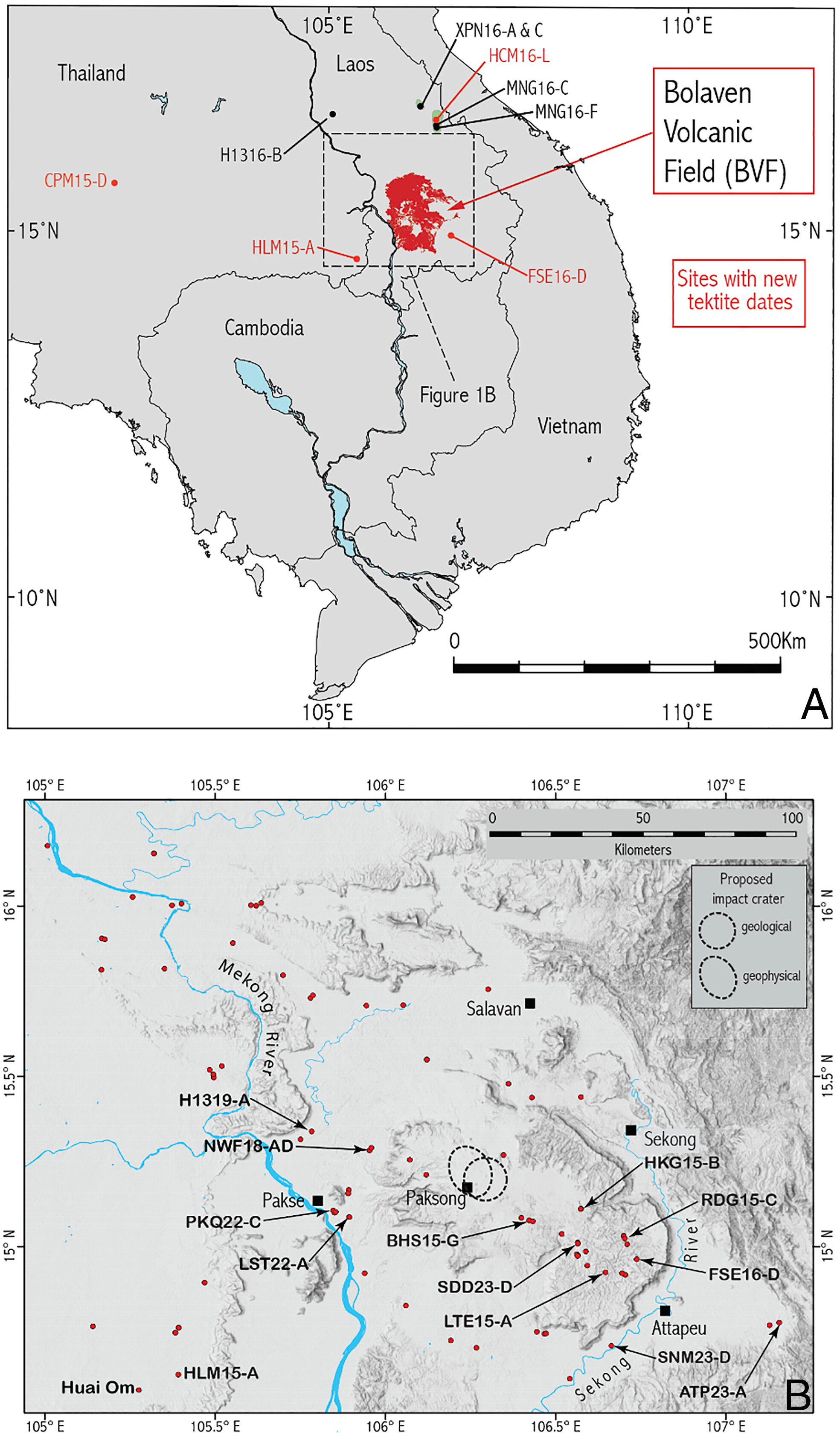Planetary scientists have released evidence they claim establishes the location where an asteroid hit the Earth three-quarters of a million years ago. Although evidence for the size and timing of the event has been found far and wide, it’s been a long road to identify the likely crater in southern Laos.
Southeast Asia, and even Australia, has many rocks produced when an asteroid slammed into the Earth 789,000 years ago. Known as tektites, black glassy rocks of this exact age form the largest debris spray from any extraterrestrial impact, even reaching Madagascar and Antarctica.
Even larger sprays would have been produced by older and bigger collisions, such as the one that caused the Chicxulub Crater, but geological processes have long buried the evidence. The tektites known as the Australasian strewn field are recent enough to still be visible in many places, while revealing the presence of an impact that must have been the largest at least since Zhamanshin.
To spread tektites so widely, the impact must have created a large crater, but none is obvious. Scientists have been seeking it for decades, gradually homing in on the Bolaven Plateau in southern Laos.
The combination of geological conditions, thick rainforest and one of the world’s most politically isolated nations is probably what has kept the location hidden for so long. A team led by Professor Kerry Sieh of Nanyang Technological University note that “unexploded ordnance hampered field work for decades” after the regions’ wars. Geologists might love their field so much they will explore an exploding volcano, but leftover bombs and land mines are a different matter.
Nevertheless, some secrets cannot be kept forever. As far back as 1983 a gravel deposit had been noted lying just below specimens of the tektites in Vietnam. A dusty layer above, which Thai geologists call “catastro-loess”, had been proposed as having fallen from the sky after being flung up by the impact. Using these clues Sieh and colleagues zoomed in, finally using a layer of pebble- to boulder-sized rocks known as the Bolaven diamicton to identify the site’s location. They believe the diamicton was formed by ancient sandstone and basaltic lava being broken up and tossed in the air by the force of the impact.
The idea the crater lies within the Bolaven Volcanic Field has been proposed before – what better place to hide a crater after all – but the evidence has not been strong enough to convince everyone.

The location of the Bolaven Volcanic Field in Southeast Asia, and the site of the suspected impact crater and tektites of the right age within it.
The team are seeking to win over skeptical geologists, using five separate datasets they say all point to the same site.
For example, although tektites of the right age are found thousands of kilometers away, they are most abundant in the upper part of the diamicton, or resting above it. Moreover, across most of the region two types of suitably aged tektites, MN- and “splashform” are found in similar numbers. However, within 200 kilometers (124 miles) of the proposed location MN-type tektites dominate, indicating something specific about that location.
The study is published open access in Proceedings of the National Academy of Sciences.
Source Link: The Likely Site Of Earth’s Most Recent Large Impact Crater Has Been Found